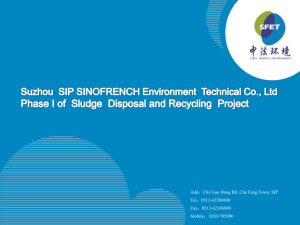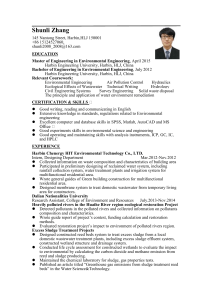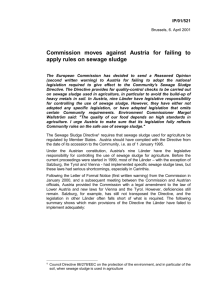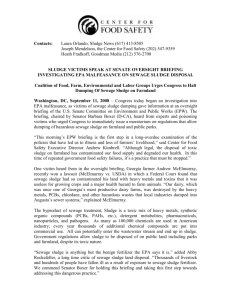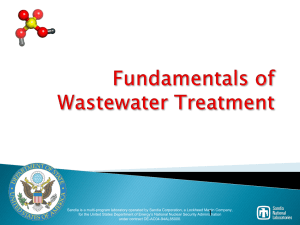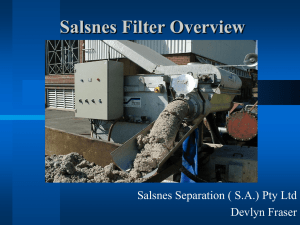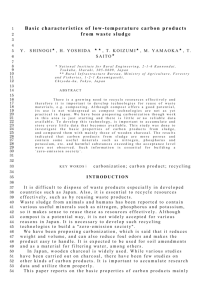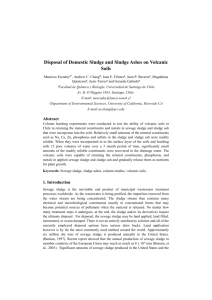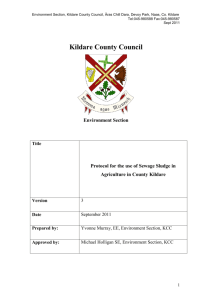Myths About Land-Applied Sewage Sludge
advertisement
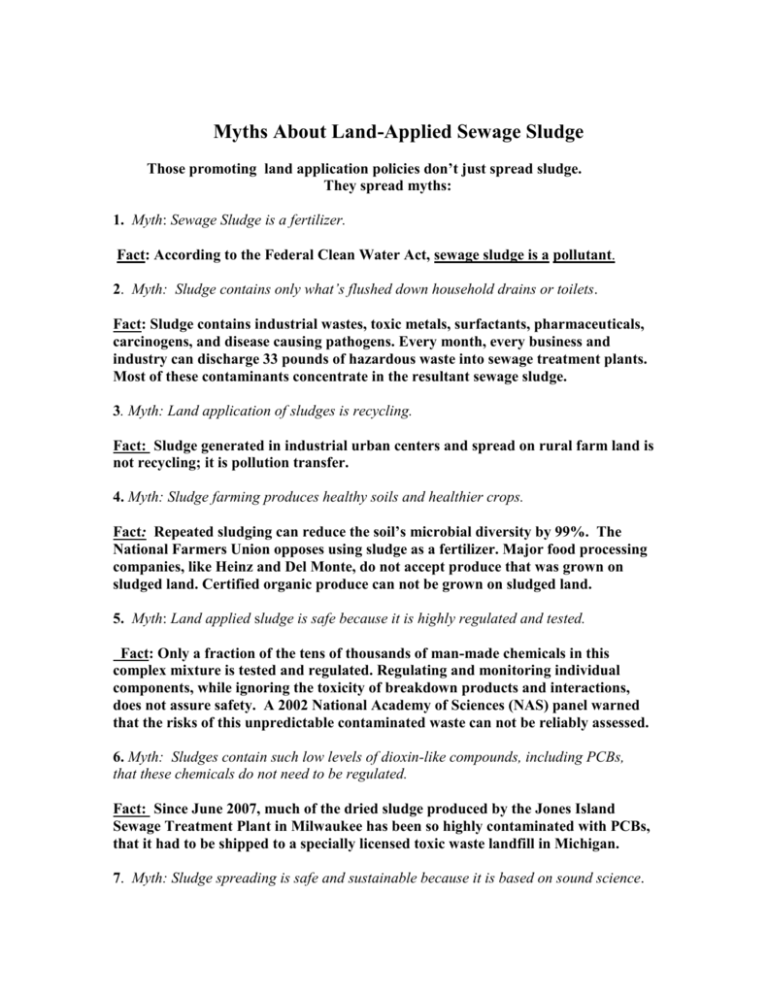
Myths About Land-Applied Sewage Sludge Those promoting land application policies don’t just spread sludge. They spread myths: 1. Myth: Sewage Sludge is a fertilizer. Fact: According to the Federal Clean Water Act, sewage sludge is a pollutant. 2. Myth: Sludge contains only what’s flushed down household drains or toilets. Fact: Sludge contains industrial wastes, toxic metals, surfactants, pharmaceuticals, carcinogens, and disease causing pathogens. Every month, every business and industry can discharge 33 pounds of hazardous waste into sewage treatment plants. Most of these contaminants concentrate in the resultant sewage sludge. 3. Myth: Land application of sludges is recycling. Fact: Sludge generated in industrial urban centers and spread on rural farm land is not recycling; it is pollution transfer. 4. Myth: Sludge farming produces healthy soils and healthier crops. Fact: Repeated sludging can reduce the soil’s microbial diversity by 99%. The National Farmers Union opposes using sludge as a fertilizer. Major food processing companies, like Heinz and Del Monte, do not accept produce that was grown on sludged land. Certified organic produce can not be grown on sludged land. 5. Myth: Land applied sludge is safe because it is highly regulated and tested. Fact: Only a fraction of the tens of thousands of man-made chemicals in this complex mixture is tested and regulated. Regulating and monitoring individual components, while ignoring the toxicity of breakdown products and interactions, does not assure safety. A 2002 National Academy of Sciences (NAS) panel warned that the risks of this unpredictable contaminated waste can not be reliably assessed. 6. Myth: Sludges contain such low levels of dioxin-like compounds, including PCBs, that these chemicals do not need to be regulated. Fact: Since June 2007, much of the dried sludge produced by the Jones Island Sewage Treatment Plant in Milwaukee has been so highly contaminated with PCBs, that it had to be shipped to a specially licensed toxic waste landfill in Michigan. 7. Myth: Sludge spreading is safe and sustainable because it is based on sound science. Fact: The 2002 NAS panel concluded otherwise. The safety claims of land application are based mostly on anecdotal evidence. State and federal rules are based on outdated or lack of science. EPA has admitted that it can no longer guarantee the safety of sludge spreading and that the whole issue “has to be revisited.” EPA claims it no longer promotes land application. 8. Myth :“Natural biology” breaks down the chemicals; “cooking kills the pathogens.” Fact: Toxic metals and dioxins don’t break down. They accumulate in the soil or are picked up by animals and plants. Treatment inactivates some pathogens. But more robust disease-causing pathogens can survive the treatment process and regrow, especially if sludge is stockpiled in cool and moist climates. 9. Myth: Sludge farming is a sustainable practice. You can use sludge forever. Fact: US policies let toxic sludge contaminants accumulate in soils until there is a 50% yield reduction. By then sludged farms have been turned into low-level waste dumps, unable to grow many crops. 10. Myth: Class A EQ sludge is so safe you can eat it. Fact: Class A EQ sludge can legally contain up to 32 mg/kg of arsenic, 14 mg/kg of cadmium, 10 mg/kg of mercury, 300 mg/kg of lead, copper and zinc way in excess of what is needed for healthy crops, as well as potentially harmful organic chemical compounds and viable disease-causing pathogens. 11. Myth: Reported illnesses are caused by mass hysteria related to odor. Land application has never seriously impacted people, groundwater, or livestock. Fact: Sludge illnesses are real. Hundreds of sludge-exposed rural people have suffered serious respiratory and gastrointestinal illnesses. Several deaths have been linked to this practice. Peer reviewed published research suggests that the interaction of irritant chemicals and pathogens can make some sludge-exposed people susceptible to life threatening infections. Cattle have been killed by ingesting forage grown on sludged fields. EPA is hiding data that document groundwater contamination. Agencies and companies working with the sludge lobby, such as the Northeast Biosolids and Residuals Association (NEBRA) and the Water Environment Federation, are disseminating misleading information, ignoring recent science, and covering up reported and documented sludge incidents. 11-1-07 For documentation and additional information contact info@sludgefacts.org and visit www.sludgefacts.org

